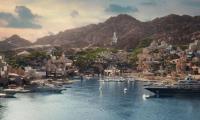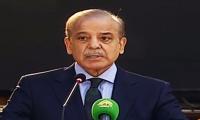Let’s just address the elephant in the room before we proceed. Yes, times are tough, inflation is having a trickle-down effect on the entire nation, prices of commodities are at an all-time high and citizens are having somewhat of a hard time coping with all this. With that being said, let us put that aside for a second and reflect holistically over the last few years.
On August 18, 2018, Imran Khan assumed his role as the prime minister of Pakistan while exuding much optimism and confidence in his ambitious 100-day agenda. Safe to say that he shattered the political status quo and broke the decades-long duopoly of Nawaz and Zardari. While his promises might have come off as too far-fetched at that moment, he reiterated his vision of creating a ‘Naya Pakistan’ which entailed strengthening the federation, revitalising economic growth, increasing foreign direct investment (FDI) and remittances, ending deep-rooted corruption, and revolutionising the social sector by empowering the people and ensuring national security for citizens of Pakistan.
To separate fact from fiction, it is essential to analyse the key economic indicators. If we go back 20 years, Musharraf increased the reserves from $1.9 to $11.4 billion, which then dropped to $7.2 billion in the PPP’s reign. With the business skills of Nawaz Sharif, the reserves reached a record high of $19.4 billion in his tenure, but ended at $10 billion in FY18. When the PTI took power, the inflation rate was averaging around 3.9 percent. However, the reserves were approximately $8.3 billion. It is safe to say that no government could avert the IMF and the terms and conditions that follow.
In 2019, we witnessed an unforeseen global pandemic, which impacted entire nations and economies by halting trade and economic progress as well as impacting the everyday lives of people across the globe. This naturally led to a rise in inflation as well as significantly raising the per barrel price of oil –ultimately increasing freight costs resulting in an influx of prices of all commodities. A notable fact remains that controllable factors by the government like prices of petroleum levy and sales tax are still considerably low in relation to previous governments.
That being said, I firmly believe that the efforts, initiatives, policies and willingness of the government project a prospective future for Pakistan and the vote of confidence given by overseas Pakistanis is an embodiment to that. During 2021, remittances from overseas workers hit a historical high of $29 billion, a 32 percent jump in three years. Just the Roshan Digital Account (RDA) has showcased an incoming $2.7 billion in October since its launch in September 2020. Their confidence is also being reflected socially, with more expats choosing to return to Pakistan.
Similarly, with more and more ease of doing business we have also witnessed a sharp incline in startups in Pakistan. For the last six years, our startups have managed to raise around $560 million. What’s great is that approximately 62 percent of it, accumulating to be approximately $350 million, was raised in 2021 alone. This not only shows the shift in the funding landscape but also reaffirms the trust of people in the talent we possess in our country.
Talking about industries in the last few years, the amount of new entrants we have seen is phenomenal. Let’s just take the automotive industry for a second, there were only three players operating in the form of a monopoly in previous governments – Toyota, Honda and Suzuki. Why was that the case? To forcefully limit investment, new plants and job creation in the country. Who knows? However, we can now see entrants like KIA, Hyundai, MG motors, Changan, Regal, Foton, Pearl, United – and the list goes on.
Getting into the micro aspect of things, there has been a ton of progress. Travel and tourism is something our country can hugely benefit from if done correctly, and I see that we are headed there. There has been development in terms of infrastructure – like new airports and roads in Gilgit-Baltistan and the fact that travellers from across the world can now be seen of Pakistani roads, casually making their way up north while documenting what a hospitable bunch of people we are, and the whole world is seeing that now. Campaigns are being held in countries like London, Australia, Japan etc. For more functional travel, the Pakistan Railways contract was also outsourced and the citizens seem to love it.
Similarly, cities like Karachi which were getting bare minimum from the government in terms of upliftment are now being given their due share. Small things like making cycling lanes, commercialising public beaches and water sports activities, introducing green line buses, constructing proper roads, making the city safer and outsourcing the cities’ garbage collection to the private sector are undoubtedly aiding a better quality of life for the citizens in the long run.
One needs to realise that years of deep-rooted corruption and exploitation of the country’s resources has taken Pakistan back 50 years of growth in relation to first-world countries. What we are witnessing right now is the rebuilding of a system and it wouldn’t be wrong to assume that the ones who truly reap the benefit of it will be our generations to come. We need to be patient, and start sowing the seeds of a better Pakistan internally so it may reflect in the years to come.
The writer is a researcher and a communications professional. He can be reached at:
nuzairvirani@gmail.com
A worker fixes a flag of the ruling Bharatiya Janata Party on a hoarding of their leader and India’s Prime Minister...
Prime Minister Shehbaz Sharif and Foreign Minister Ishaq Dar address a press conference in Lahore. — AFP/FileWhen...
Koohi Goth Women Hospital in Malir Karachi. — Facebook/koohigoth1A majority of poor women in Pakistan have a faint...
This image shows Pakistan's Ayesha Rashid, who was recently given the heart of a 69-year-old brain-dead Indian patient...
A car is seen burning along a road as Pakistan Tehreek-e-Insaf party activists and supporters of former prime...
Students of the Church Mission School, located in the heart of Karachi’s old city area, brief a judge about the...







